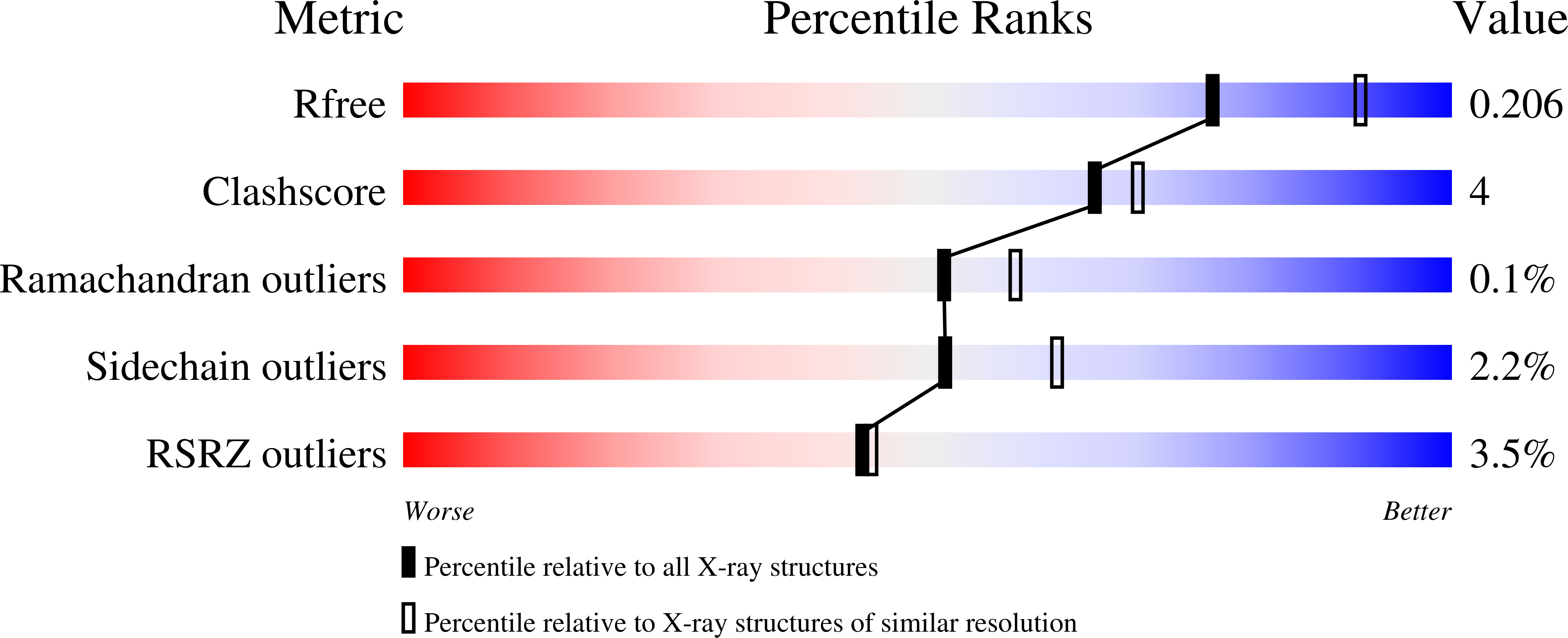Mechanism of Tc toxin action revealed in molecular detail.
Meusch, D., Gatsogiannis, C., Efremov, R.G., Lang, A.E., Hofnagel, O., Vetter, I.R., Aktories, K., Raunser, S.(2014) Nature 508: 61-65
- PubMed: 24572368
- DOI: https://doi.org/10.1038/nature13015
- Primary Citation of Related Structures:
4O9X, 4O9Y - PubMed Abstract:
Tripartite Tc toxin complexes of bacterial pathogens perforate the host membrane and translocate toxic enzymes into the host cell, including in humans. The underlying mechanism is complex but poorly understood. Here we report the first, to our knowledge, high-resolution structures of a TcA subunit in its prepore and pore state and of a complete 1.7 megadalton Tc complex. The structures reveal that, in addition to a translocation channel, TcA forms four receptor-binding sites and a neuraminidase-like region, which are important for its host specificity. pH-induced opening of the shell releases an entropic spring that drives the injection of the TcA channel into the membrane. Binding of TcB/TcC to TcA opens a gate formed by a six-bladed β-propeller and results in a continuous protein translocation channel, whose architecture and properties suggest a novel mode of protein unfolding and translocation. Our results allow us to understand key steps of infections involving Tc toxins at the molecular level.
Organizational Affiliation:
1] Department of Physical Biochemistry, Max Planck Institute of Molecular Physiology, 44227 Dortmund, Germany [2].

















